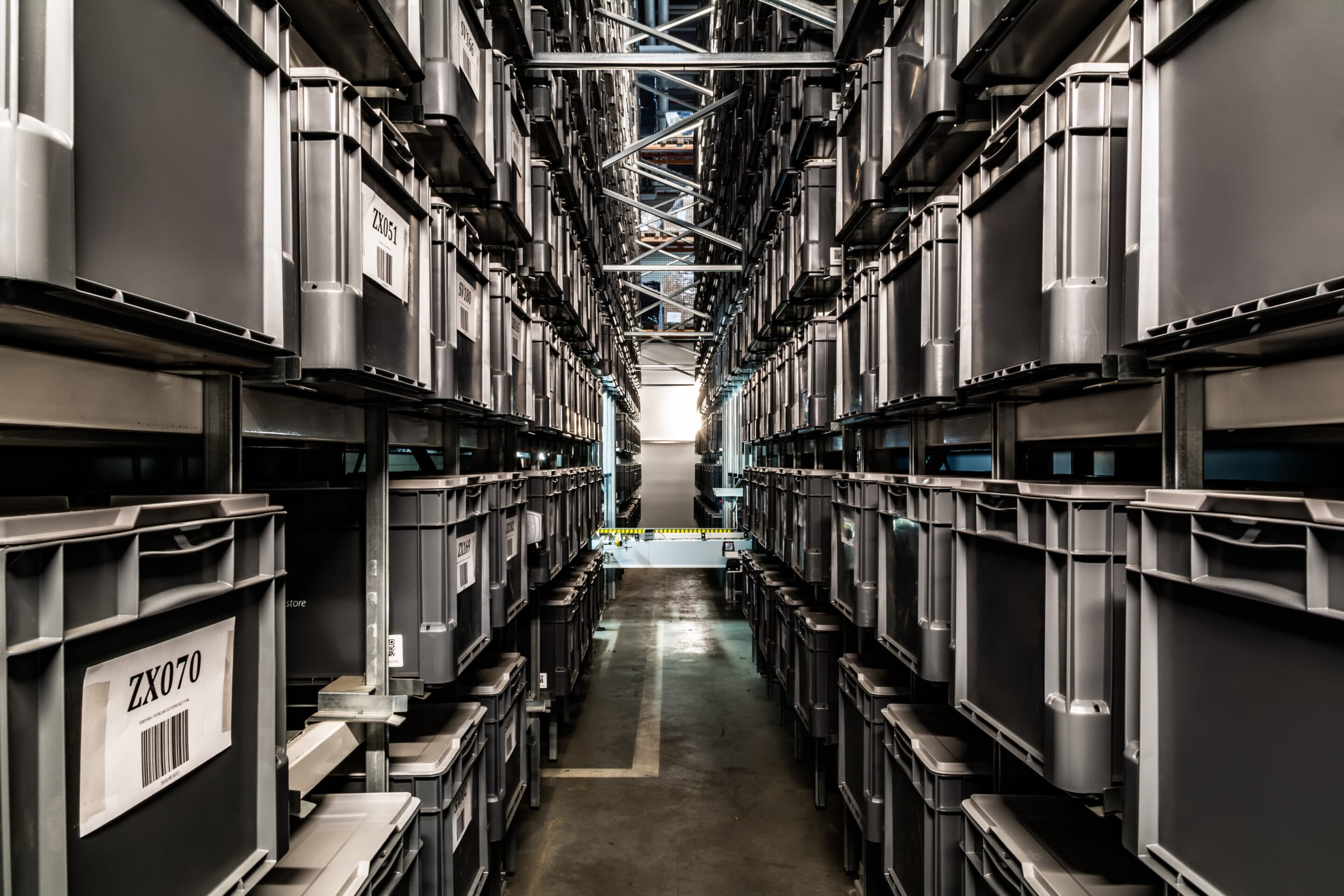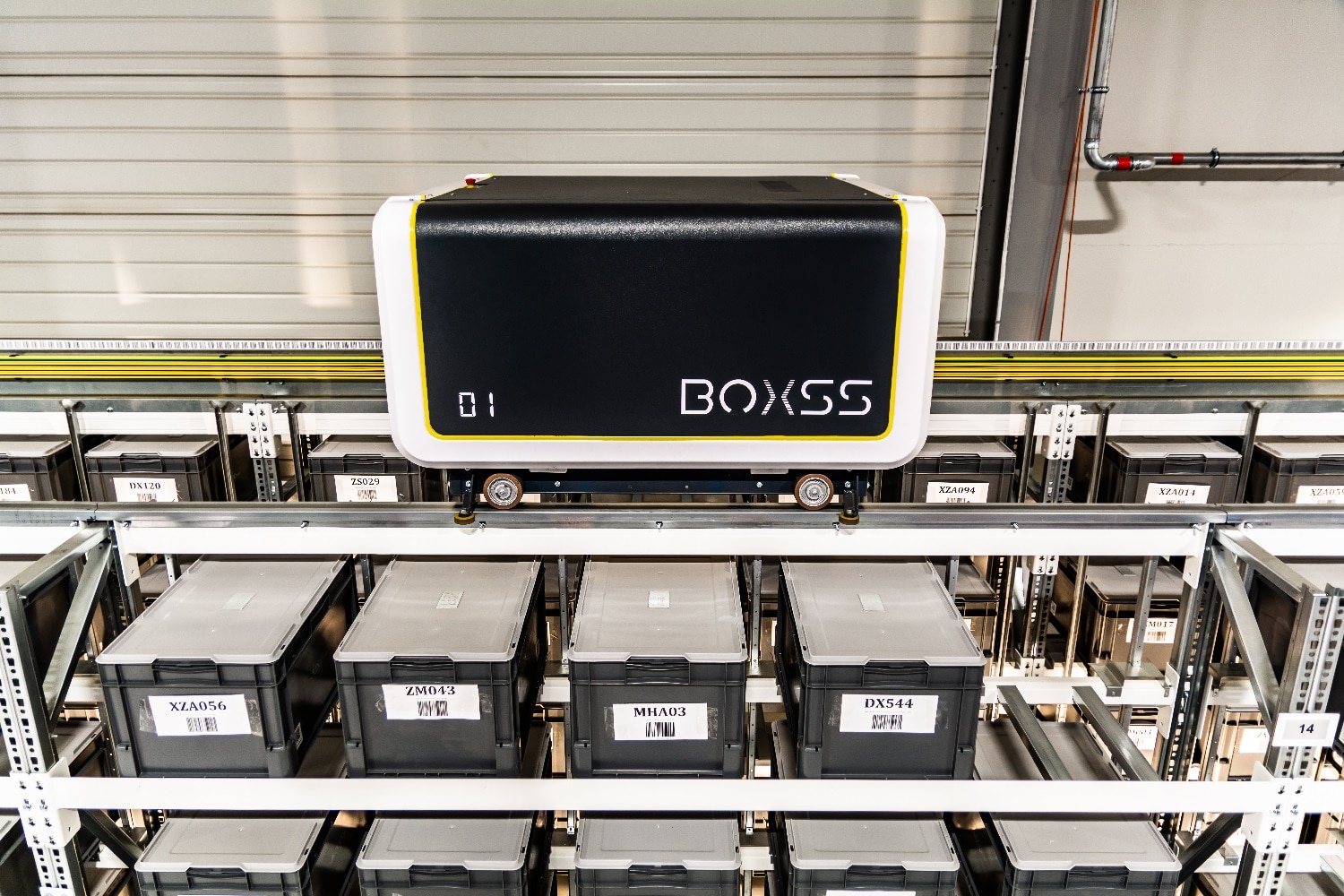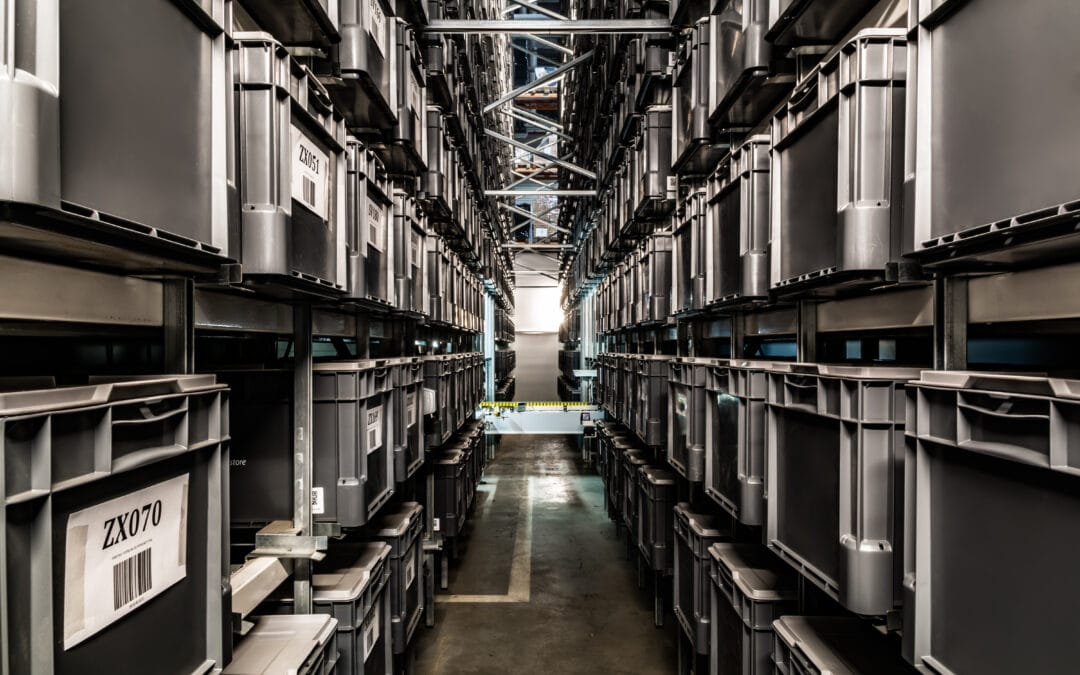Merida is a company that produces equipment and hygiene products. We've already presented the Use Case of warehouse automation, and in today's article we'll take a closer look at the following:
- project assumptions,
- the challenges that Merida faced,
- the warehouse automation plans,
- the project proposal from LoopStore,
- plans for further development.
Merida's warehouse project goal
Our discussions with Merida and analysis helped us to detail the main objectives and goals of the warehouse automation project:
- reduce wasted time in searching and restocking,
- reduce time spent picking goods,
- saving space and freeing up pallet space,
- improved work organization and ergonomics.

How has it been so far?
Orders in Merida are divided into two parts: bulky products and general cargo. Bulky items are easy to pick, but small items pose the most problems, and this is the area that was analysed.
The general goods storage area consisted of a pathway with 28 m long, 8 m high pallet racks on both sides and a total capacity of 300 pallets, of which 60 pallet spaces in the lower zone were used for general goods storage.
The racks were divided into two zones. The upper zone (located above 2 m) was a pallet storage area where inventory was stored. The lower zone (below 2 m) was the place for trays and containers where products were distributed. The next stage was picking thanks to the picker according to the order placed.
Every now and then the products in the lower zone were replenished. This consisted of removing the pallet with supplies from the top, finding the missing items and replenishing them. Sometimes it so happened that the shortages in the lower zone were not replenished on time, which caused downtime during the picking and reorganization of the work because of the need to pull off the top of the pallet and find the needed elements.
The picker was not equipped with the right tools to retrieve and replenish pallets, which required an additional person with a forklift and access to the system to record the replenishment in WMS/ERP.
What were the plans to optimize the storage and picking process?
Merida, in order to increase the work efficiency and optimize the storage space, wanted to use a 4 level mezzanine with shelving racks, where all small goods would be stored, both those for current operations and the stock that was previously stored on pallets.
The use of a warehouse mezzanine is a standard solution in such situations, but it creates some inconveniences.
- The operator has to walk around the three levels of the mezzanine, thus time saved on orderly storage is wasted on moving around.
- The mezzanine is a work area and must meet all ergonomic, safety and health and safety requirements, which includes adequate clearances at each level, adequate lighting, fire protection systems on each floor, stairwells, circulation and evacuation corridors.
- The size of the planned mezzanine is 110 m2/level, making a total of 440 m2, of which only 40 m2/level of occupied space is shelving, and the rest is communication passageways, goods supply areas and staircase. The effective storage space for the entire mezzanine floor is only 160 m2, or about 36% of the entire development.

A suggestion for warehouse automation from LoopStore
Bearing in mind all of Merida's needs and requirements, we proposed the installation of an automated warehouse with a height of 7 m and a length of 15 m. Its total capacity is 650 containers with dimensions 600x400x320 and a maximum load of 25 kg. In order to use the capacity efficiently, each container can be divided into 6 parts, which allows for the storage of up to 6 different products - SKUs per container. This solution eliminates occupying a location with unfilled containers.
The principle of the BOxSS system is to deliver goods to a person (to the GTM station). From one place (at the GTM station) picking and supplying the warehouse takes place. The time of delivery of the container to the station is at most 60 s.
The system allows for consolidation of orders, making picking even more optimized and the whole system more efficient. The project was equipped with containers with lids. This solution reduced the sprinkler system by 70%, which directly translated into return on investment - ROI.
Benefits of BOxSS
- By using BOxSS, the need for operators to walk around has been eliminated because everything is done in one place.
- We avoided wasting time due to shortages of items during picking.
- 60 pallet spaces have been freed up.
- The project made it possible to control inventory levels and significantly eliminated picking errors.
- The system in conjunction with the WMS/ERP program eliminated picking slips and related errors.

Introducing new goods does not force operators to "remember" subsequent locations with products. After six months of the BOxSS system operation, another benefit unexpected by the customer has appeared. The frequent rotation of employees does not cause a big problem, because there is no need for pickers to learn the location of goods. This significantly shortens the training process and allows the new operator to become fully effective more quickly.
The BOxSS system in Merida's warehouse occupies only 30 m2, with guards mounted directly on the structure, which takes up no additional storage space and allows for additional storage in the immediate vicinity of the warehouse.
Room for growth
BOxSS can easily be extended with further modules, so that the capacity and efficiency of the warehouse can be increased without great cost. The system implemented in Merida has been prepared so that it can be expanded with further modules.




Recent Comments